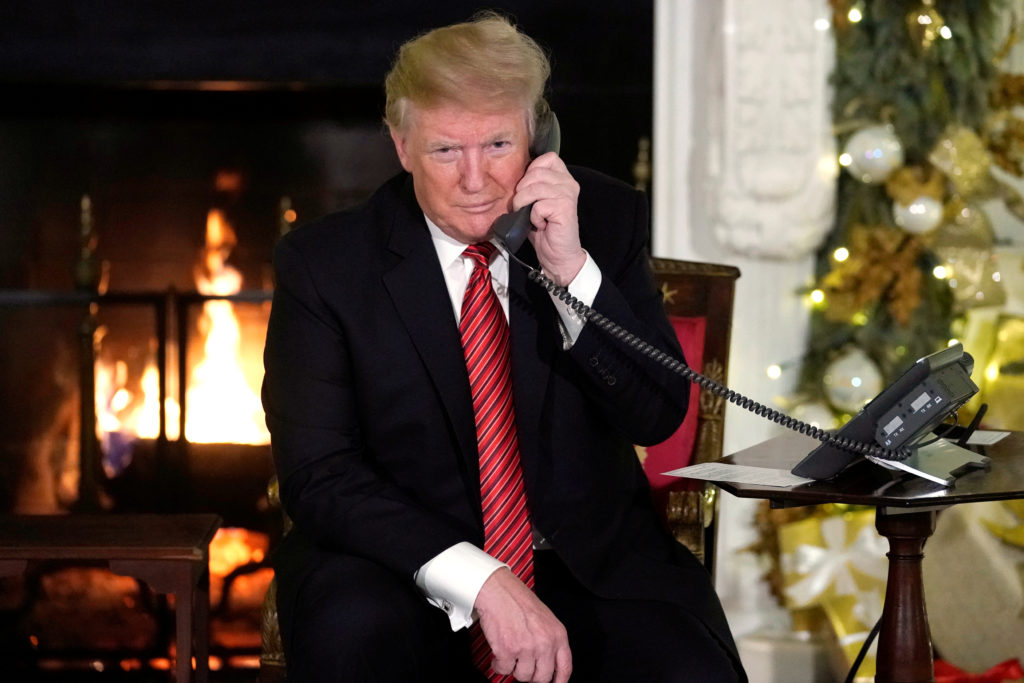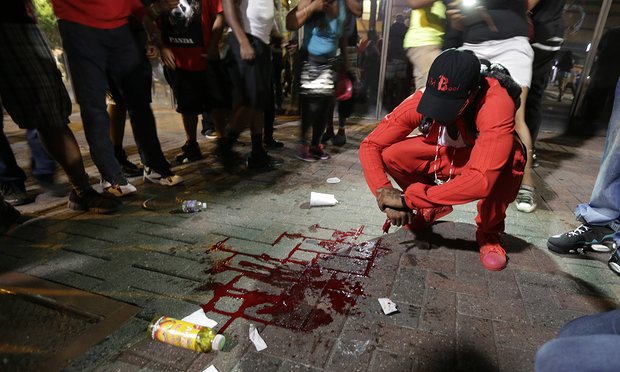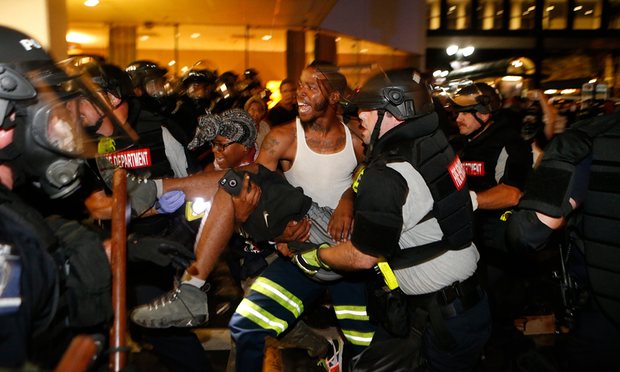
This article is more than
10 year oldViolence and confusion has spread across Charlotte after a second night of protests was interrupted by gunfire when one protester shot another.
North Carolina governor Pat McCrory declared a state of emergency on Wednesday, and called for help from the National Guard and the Highway Patrol.
The demonstrations started on Tuesday after police shot and killed a black man.
Late on Wednesday night crowds gathered at the site of the protester’s shooting, and pulled clay planters from city flowerbeds to throw at police. Dirt from the pots mixed with the wounded protester’s blood on the sidewalk, trampled by the opposing ranks of police and protesters.
Initially city officials said the man had died from the gunfire, but later reversed to say he was alive but critically wounded.
Protesters held signs that read “release the tape”, referring to police video of the shooting that started the protests on Tuesday.
Police shot and killed Keith Scott, a black man, in the parking lot of an apartment complex where he lived on the east side of the city. Mayor Jennifer Roberts’s spokesman said she would review the video footage on Thursday, but has no plans to release it.

The new shooting on Wednesday night took place in an upscale section of Charlotte’s business district called Uptown, and a few protesters looted stores as crowds paced the streets.
Robert Noble, 48, and his wife were finishing dinner at a restaurant called City Smoke when they saw a wave of protesters surge past the building’s glass front. “Then a brick came flying through the window,” he said. Staff and patrons evacuated through a back corridor, he said.
Police mustered at the intersection where the night’s shooting had happened, divided it into quadrants and marched outward, slowly pressing back protesters. They fired tear gas canisters as they moved.
Protesters lost and regained and then lost territory again into the night, and eventually started flinging wine bottles and at least one Moltov cocktail at the lines of police. Once protesters threw bottles police started firing orange plastic bullets filled with white powder. The shots – which made the sound of automatic gunfire – scattered crowds before they gradually reformed.
Police wore the now-familiar riot gear that has led some to criticize the militarization of law enforcement. But in North Carolina, home to numerous military bases and veterans, police found themselves squaring off more often against former soldiers who had their own tactics and gear.
